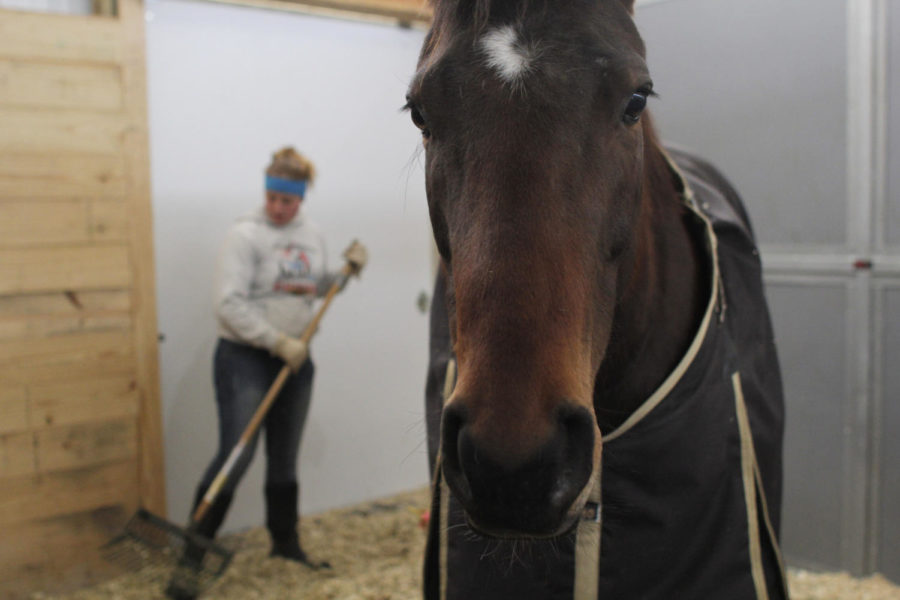Taking a trot
March 6, 2014
Nineteen horses owned by Iowa State will make themselves at home in the new Equine Learning Center, located on Mortensen Road on the south end of campus.
The new Frederiksen Court apartments used to be grazing land for the horses. After April 2013, the horses were moved to the Laboratory Animal Resources near South Duff.
Iowa State houses two breeds — thoroughbreds and quarter horses.
As soon as the water was turned on, the horses were moved into the learning center. Thirteen of the horses were moved to their new home on Feb. 12.
Right now, Iowa State has 10 yearlings, 20 brood mares and three stallions, said Nicole Ferwerda, lecturer and barn manager. They also expect 19 foals this year. Ferwerda said this is an average year in terms of the amount of foals expected.
“The horses have been waiting to move in for awhile,” Ferwerda said.
Mark Weber, horse farm student employee and senior in animal science, said it was challenging to build the learning center. Finding temporary housing was difficult, but the push to finish the facility was tougher while still trying to manage schoolwork.
The new Equine Learning Center can hold up to 23 horses, Ferwerda said. The center has bigger stalls that are easier to disinfect and clean.
Ferwerda said that the learning center has 10 stalls that are 12×12 foot, which is a standard size. It also has 10 stalls that are 12×14 foot and three stalls that are 14×16 foot for the stallions.
Heather Smith, horse barn employee and senior in animal science, said, “It’s more suitable for horses.”
Workers now have automatic water in the learning center, which makes sure the horses always have water. Smith said that the stalls in the learning center are nicer than the stalls in the horse barn because they have mats rather than a dirt floor.
Construction of the learning center started in July 2013, and Ferwerda hopes that it will be completed by this July.
Once completed, it will have a larger breeding room that is inside, a larger reproductive lab, lights on timers, a feed room, classrooms, wash bays, hay storage, stalls, an office and a bathroom.
With the new learning center, Ferwerda now has to manage two barns. From a management perspective, Ferwerda said that the amount of labor hours has doubled. They now have twice as many stalls to clean.
A consequence to having horses housed in two places is the increase in the amount of horse traffic. Ferwerda said the horses are moved around, and every couple of weeks there will be changes.
Mares about to give birth are transported to the horse barn and, after about a week, both mother and foal are moved back to the learning center.
Ferwerda said the horses are adjusting well. While the young horses have to get used to moving around, a lot of the adult horses are ex-race or ex-show horses and are used to moving around a lot.
There are trade-offs between the new facility and the old space, Ferwerda said. While horses now have their own stall in the learning center, the horses are also losing some social time that they have at the older horse barn.
Students will be able to have labs in the learning center and see demonstrations in the reproductive lab. The lab has a bigger area specifically to hold demonstrations for students. Having it inside also makes it easier for the employees to breed horses.
“Recently, we have been trying to get even better genetics in our quarter horse and thoroughbred breeding programs,” Weber said. “With the new breeding lab at [the learning center], I hope ISU can attract some new brood mare and stallion donations to our herd.”

















